Ride Video Game Review

No review of Milestone’s Ride video game is complete without a comparison to Gran Turismo. Even though it first came out in 1997, the Gran Turismo series remains the hallmark for racing simulation games, offering realistic racing physics, a huge roster of real world cars, and a high degree of tuning options.
Ride is an excellent attempt at making a two-wheeled version of Gran Turismo, clearly designed for motorcycle enthusiasts, featuring a large roster of classic and modern bikes with a high degree of customization never before seen in a motorcycle racing game.
Milestone has a solid track record of producing motorcycle racing games, having produced fully-licensed games based on the MotoGP, World Superbike and MXGP World Championships. Ride is Milestone’s first original motorcycle property, not tied to any racing series. Instead, Milestone devoted its resources to licensing over 100 real world motorcycles from 14 different manufacturers (and more available for purchase as downloadable add-on content).
Ride offers several gameplay modes, from simple single races to a world tour mode where you complete different challenges to rise up the rankings. Winning races will earn credits which can be put toward buying more motorcycles or upgrading ones already in your stable.
Players start off by selecting one of three naked motorcycles: the Ducati Monster 696, the Triumph Street Triple, and the Yamaha MT-07 (FZ-07 to us North Americans). At first, they can only race against other sub-700cc naked bikes such as the MV Agusta Brutale 675 or Honda CB650F. It doesn’t take long to earn enough credits to buy more motorcycles like an Erik Buell Racing 1190RX, or a KTM RC390.
The roster also offers a good mix of classics like a Yamaha FZR750R OW01, Honda NR750 or Aprilia RSV1000. Save up enough credits and you can own a Ducati Desmosedici RR or a WSBK-level Kawasaki Ninja ZX-10R. Ride even included a couple of electric sportbikes in the Lightning LS-218 and Energica Ego. Being a racing game, Ride is very sportbike heavy, but if Milestone really wants the series to live up to the Gran Turismo standard, it should consider adding other segments like scooters or cruisers to future installments.
Buying motorcycles is only part of the fun; credits can also be put towards upgrading your bikes. Need more power? Try adding a Dynojet ECU or swapping an aftermarket exhaust. About to tackle a more technical circuit with a lot of tight corners? Upgrade the suspension system and you can adjust preload, rebound and compression to improve handling.
The rider can also be customized, with a large selection of helmets, racing suits, gloves and boots. You can even fine-tune your riding style so you can stick your elbows out like Ben Spies or reach spectacular lean angles like Marc Marquez.
When you’re done tinkering, you can take your upgraded bike to the track. Most races are pretty straightforward. There’s no qualifying so you always start in eighth place for some reason, but it’s not that difficult to get a strong start, especially once you’ve invested credits in a good setup.
At its most basic level, the controls are simplified with automatic gear shifts and linked brakes. Crank up the realism level and players can shift manually, control front and rear brakes separately and even adjust the rider’s posture to shift weight forward, back, or even tuck in to reduce drag. You can even change traction control settings and wheelie mitigation, even on motorcycles that don’t offer those features. This is one of the few times Milestone strays from absolute realism, but it’s a welcome decision to improve gameplay. But for those who prefer a more realistic experience, traction control and anti-wheelie control can both be disabled.
It takes a while to get a handle on the controls. Steering can be twitchy, as a joystick can never simulate the same level of control and feedback as a real set of handlebars. Players will get the hang of it with practice, but they’ll still end up over-correcting their steering at times.
Braking can be difficult to master, even when using linked brakes to control both front and rear braking with a single trigger. Without a real feel for weight transfer or traction, you have to guess at how much brake pressure to apply before entering a corner. Brake too hard and you’ll lift the rear wheel or, if your settings are set to higher levels of realism, you may find your wheels locking up completely.
Throttle control is a bit easier to learn, especially when using a controller with analog triggers. Holding the triggers down will pin the throttle but to fully master Ride, players will need to know when to ease up to stay on an optimal racing line.
For a change of pace, Ride also offers drag races, pitting racers head-to-head on a salt flat with smart gear ratio tuning and timely shifting playing a significant role.
Ride offers 15 different racing venues including real world tracks like Donington Park, Magny-Cours and Road America. Others are fictional ones such as the Milan and Miami street circuits and country-side tracks such as North Wales (a not-too-subtle stand-in for the North West 200 circuit; Milestone obviously spent most of its licensing budget on the motorcycles instead of race tracks). Most tracks also offer alternate layouts, providing added variety.
If there is one thing holding back Ride, it’s the frustratingly-long loading times that may turn off impatient gamers. Part of the problem is the high level of detail Milestone put into rendering each motorcycle, but players may be willing to wait to get a bike that looks exactly like the real thing. Less forgivable are some rather unnecessary delays that quickly grow tiresome.
When waiting for a race to load, the screen displays information about your chosen bike such as the production history, engine characteristics and styling notes. After waiting for about half a minute, the game is finally done processing and brings us to a three-dimensional rendering of the motorcycle. When you are done admiring your bike, you go back to the previous loading screen and wait another 30 seconds before the race finally loads.
The 3D rendering is pretty cool, as you can use the right joystick to move the camera around and examine the bike from different angles, but if you’ve been using the same motorcycle for several races in a row, you just want to get on with the racing. It’s an unnecessary step, and there’s no way to avoid it.
Also annoying are delays caused by the game constantly saving your data. In modern video games, your progress is periodically saved automatically so you never have to worry about having to constantly save after every change. In Ride, these saves happen too frequently and players will find themselves waiting for them to complete before continuing. The game saves every time you exit the bike customization area, even when you haven’t made any changes. The same thing happens when you access game settings like changing volume levels or choosing the number of laps per race. Whether or not you actually change anything, you have to wait for the game to save.
The guitar-heavy music can also get annoying, as my wife, Jackie, will attest after having to watch me play for a few races. I found it better to just turn the music volume down, leaving just the roar of the engine as my soundtrack.
Once you get past the slow load times, Ride is a solid first effort at a Gran Turismo-style game for motorcyclists. While the selection of motorcycles and choice of tuning options is impressive, the bikes don’t feel significantly different from one another on the track. Straddle a big Single like the KTM 690 Duke or an inline-Four BMW S1000RR in real life and you can feel and hear the difference. Ride tries its best to provide realism but there’s no replacing the real thing.
Ride is available now in North America on Playstation 4, Playstation 3, Xbox One, Xbox 360 and PC (via Steam).
+ Highs
- Bike porn!
- 110 motorcycles to choose from
- Several customization options
– Sighs
- Slow loading times
- Guitar-heavy soundtrack gets tiresome
- Still more fun to ride the real thing

Dennis has been a part of the Motorcycle.com team since 2008, and through his tenure, has developed a firm grasp of industry trends, and a solid sense of what's to come. A bloodhound when it comes to tracking information on new motorcycles, if there's a new model on the horizon, you'll probably hear about it from him first.
More by Dennis Chung





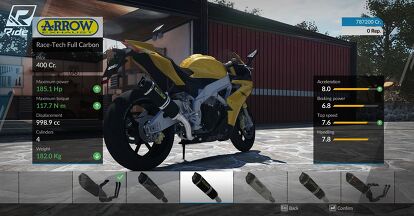








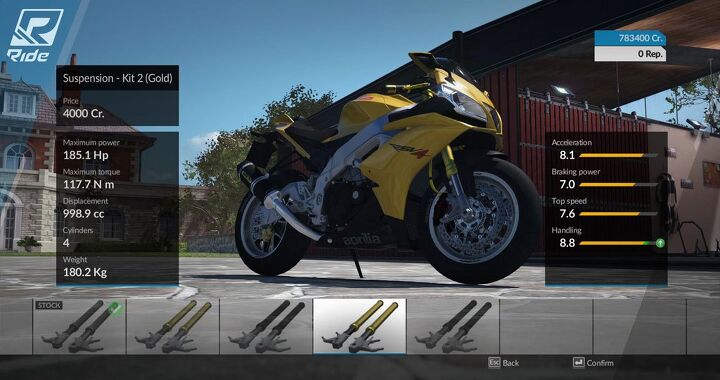










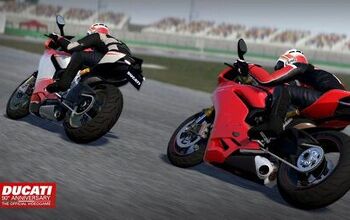
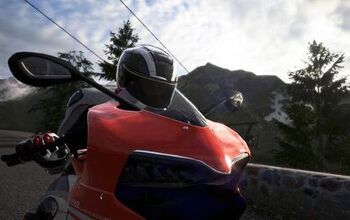
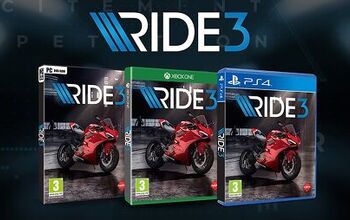















Comments
Join the conversation
YES! Definitely add cruisers, race bikes, flat trackers both retro and new, and even enduros and motocross if you can! A game called Ride better have all the riding, ALL of it.
Gran Turismo might once have been king, but Forza is now the top dog [and has been since Forza 4]. And this game sounds more like Forza anyway- geared toward faster racing type bikes instead of a vast array of many different types, and the ability to use traction control and the like on vehicles that don't actually have those options in for-real life.